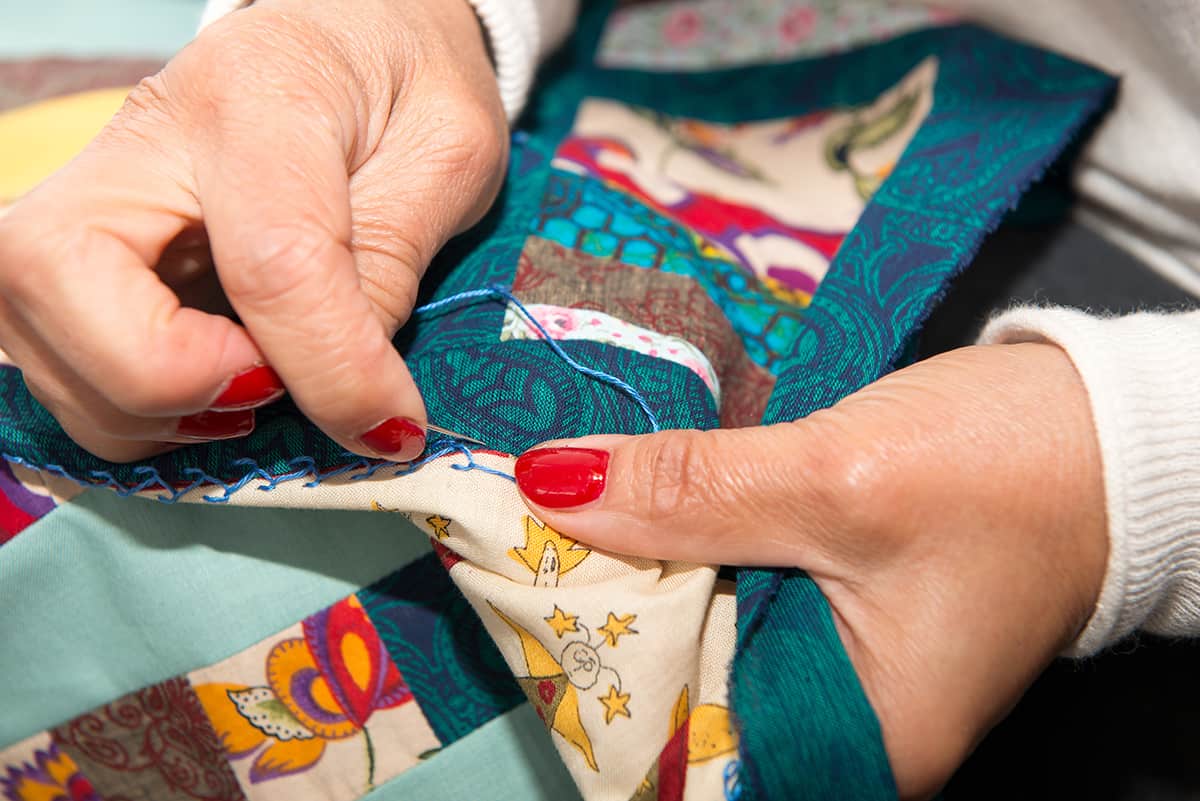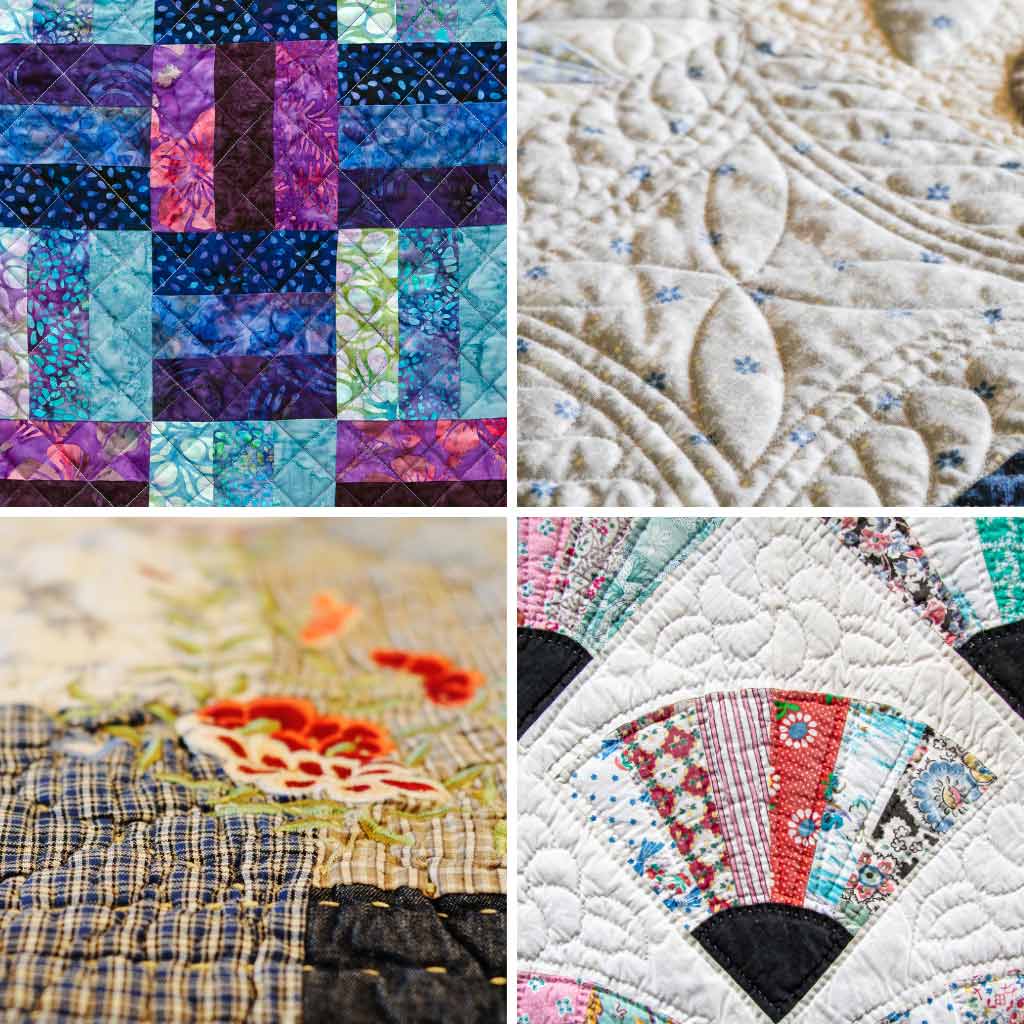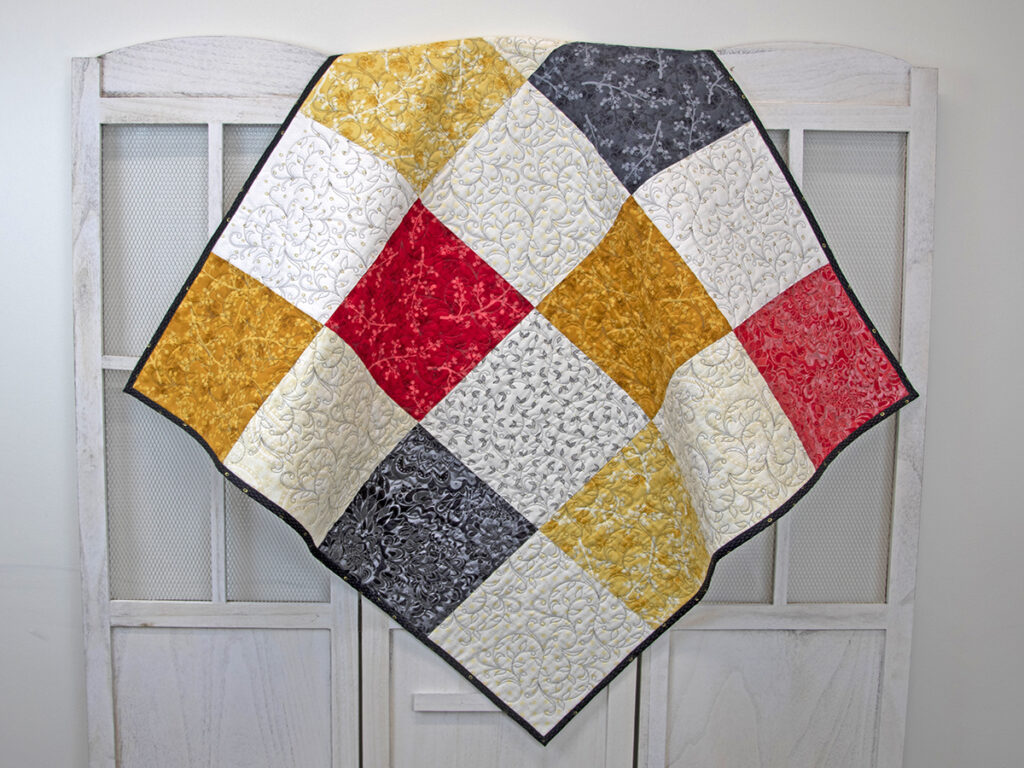Are you looking to learn how to quilt like a pro with an embroidery machine? Whether you are a beginner or an experienced quilter, it is possible to achieve professional results using an embroidery machine. In this article, we will provide you with all the tips and tricks you need to know to quilt like a pro with an embroidery machine. So, if you want to get the most out of your embroidery machine and create stunning quilts, keep reading!
Getting Started

Choosing an Embroidery Machine
When it comes to quilting with an embroidery machine, the most important factor is to choose the right one. Look for a machine that has a large enough workspace to accommodate the quilt pieces and the embroidery designs. Consider the machine’s speed and how quickly it can stitch out the designs. Also, make sure it has the capability to sew multiple layers of fabric and batting.
Preparing Your Fabric
Before you begin quilting, it’s important to make sure your fabric is prepped and ready to go. It’s best to use a stabilizer to help keep the fabric from stretching and warping. Iron the fabric and batting to remove any wrinkles and make sure it is cut to the correct size. Pre-washing is also recommended to ensure that the fabric won’t shrink during the quilting process.
Pre-Quilting Tips
Before you start quilting with your embroidery machine, there are a few tips to keep in mind. Make sure to mark the quilt pieces with a marking pen or chalk so that you know where to place the embroidery designs. Also, use a walking foot to help keep the fabric layers from shifting while stitching. Finally, take your time and don’t rush the process. Quilting with an embroidery machine is a great way to create beautiful quilts, but it takes time and patience to get it right.
Quilting Stitches and Designs

Quilting Stitch Basics
Quilting is an essential part of any sewing project. It provides an extra layer of protection and structure to the fabric and helps create a professional-looking finish. You can use a standard sewing machine to quilt small projects, but if you want to quilt a large quilt, an embroidery machine can be a great option. Embroidery machines allow you to create intricate designs and patterns that can be difficult to achieve with a regular sewing machine.
To quilt a large quilt on an embroidery machine, it is essential to understand the basics of quilting stitches and designs.
Different Quilting Designs
There are many different quilting designs to choose from, including single and double lines, stippling, feathering, and more. Each design has a unique look and can be used to create beautiful quilts. The most common quilting designs are straight lines and stippling. Straight lines are the simplest and most classic way to quilt and are easy to do with an embroidery machine. Stippling is a more intricate quilting design that requires more time and patience, but can be very rewarding.
When quilting with an embroidery machine, it is important to pay attention to the size and type of quilting stitch you are using to ensure that your quilt has a professional and even look. Different quilting stitches require different needles and thread, so it is important to use the right tools for the job. Additionally, it is important to practice your quilting stitches on scrap fabric before quilting your large quilt on the embroidery machine. This will help you get comfortable with the machine and the quilting stitches and ensure that your quilt looks its best.
Quilting a Large Quilt
Preparing the Quilt
Before using an embroidery machine to quilt, the quilt must be prepared correctly. First, the quilt top should be pressed and seams should be secured. The batting should be cut to size, with extra for the sides, and basted to the quilt top. The backing should also be cut and basted to the quilt top.
Quilting with the Embroidery Machine
Once the quilt is prepared, the quilting can begin. Place the quilt in the embroidery hoop and secure it with the embroidery machine’s hoop stabilizer. Adjust the hoop size as needed to fit the quilt. Select the quilting design and set the machine speed. Begin quilting, moving the hoop as needed to complete the design.
Finishing Touches
When the quilting is complete, use a trimmer to trim the batting and backing fabric to the same size as the quilt top. Bind the quilt with binding tape and finish by adding a label with the quilt’s title and the date it was completed.
Troubleshooting
Common Problems
Thread Breaks – Thread breaks are the most common problem when quilting with an embroidery machine. To fix this, make sure you are using the correct type and weight of thread for your project, and that it is properly threaded through the machine. Also, be sure to check the tension settings; if they are too high, the thread can break.
Machine Jamming – If your machine is jamming frequently, check to see if the needle is bent or if the bobbin is not properly threaded. Also, make sure the needle is the correct size and type for the fabric you are using.
Fabric Not Feeding Properly – If your fabric is not feeding properly, the feed dogs may need to be adjusted. Additionally, make sure the throat plate is clean and free of lint, and that the presser foot is making good contact with the fabric.
Tips for Efficient Quilting
Adjust Speed Settings – When quilting, it is important to adjust the speed settings. If the machine is running too slow, it can cause the fabric to bunch up or pull the needle off the fabric; if the machine is running too fast, the stitches may become uneven.
Use a Hoop or Template – Using a hoop or template will help ensure that your quilting stitches are even and consistent. It also makes it easier to control the fabric and keep it from shifting.
Use a Walking Foot – A walking foot is a special foot for your machine that helps to evenly feed the fabric through the machine. This will help to keep your stitches consistent and reduce the risk of puckering or pulling.
Frequently Asked Questions
What type of fabric is best for quilting with an embroidery machine?
- Cotton fabrics are the best choice for quilting with an embroidery machine. The fibers in cotton fabrics are strong and thick enough to withstand the tension of the embroidery thread, and the fabric won’t stretch or distort when stitched. Cotton fabrics come in a wide range of weight and thread counts, so you can choose the best fabric for your project.
- Linen fabrics are also good for quilting with an embroidery machine. Linen is a bit thicker and heavier than cotton, so it can withstand the tension of the embroidery thread. It also won’t stretch or distort when stitched and will keep its shape better than cotton.
- Synthetic fabrics can also be used for quilting with an embroidery machine. Synthetic fabrics like polyester and nylon are lightweight and durable and won’t stretch or distort when stitched. They are also good for projects that require a lot of detail work, as they won’t fray or unravel when cut.
What size needle should I use for quilting with an embroidery machine?
Choosing the right needle size
- The size of the needle should be determined by the weight of the quilt fabric. If the quilt fabric is lightweight, a size 11 or 12 embroidery needle will work. If the quilt fabric is medium-weight, then a size 14 or 16 needle would be best.
- For heavier quilt fabrics, such as those used in traditional quilting, a size 18 or 20 needle is recommended. This will ensure that the fabric is not damaged during the quilting process.
- The size of the needle also depends on the type of thread being used. If a fine thread is used, then a smaller size needle should be chosen. If a thicker thread is used, then a larger size needle may be necessary.
Other Considerations
- It is important to consider the type of fabric being used when selecting a needle size. If the fabric is a woven fabric, then a sharper needle is recommended. If the fabric is a knit fabric, then a ballpoint needle should be used.
- It is also important to consider the type of design being stitched. If the design is intricate, then a smaller needle may be needed to ensure the design is sewn properly. If the design is less detailed, then a larger needle may be used.
How do I adjust the tension on an embroidery machine for quilting?
Adjusting the tension on an embroidery machine for quilting requires special attention to ensure a successful end result. Start by checking the tension of your bobbin thread by pulling about six inches of thread from the bobbin and then running your finger along the thread. If the thread feels too tight or too loose, it’s time to adjust the tension. To do this, turn the tension knob on the outside of the machine until the thread feels just right. Next, thread your needle and check the tension of the top thread. You may need to adjust the top thread tension using the tension knob on the top of the machine. Finally, test the tension on a scrap piece of fabric before quilting your project.
What Types of Embroidery Designs Are Best for Quilting?
Embroidery designs featuring motifs, patterns and textures are ideal for quilting. Applique designs, as well as motifs with a 3D effect, also create beautiful quilt designs. Designs that use multiple colors, or have a single large motif, will help to create a striking quilt. Large designs are often best used on larger quilts, while small designs can be used to create intricate quilt blocks.
What type of thread should I use for quilting with an embroidery machine?
When quilting with an embroidery machine, it is important to use the right type of thread. Cotton thread is the best choice, as it is strong and durable, and will not break easily when stitching. Polyester thread is also a good option, as it is strong, durable, and has a beautiful sheen. Thicker threads, such as embroidery floss, should be avoided, as they can put too much strain on the machine. It is also important to use the same type of thread for both the top and the bobbin thread, as this will ensure that the quilting is even and consistent.
Conclusion
Quilting with an embroidery machine is a great way to add unique patterns, textures and colors to your quilts. With the right knowledge, you can create beautiful quilts with ease and precision. With the tips and tricks outlined in this article, you now have all the information you need to start quilting like a pro. So, get out your embroidery machine, get creative and start quilting!






